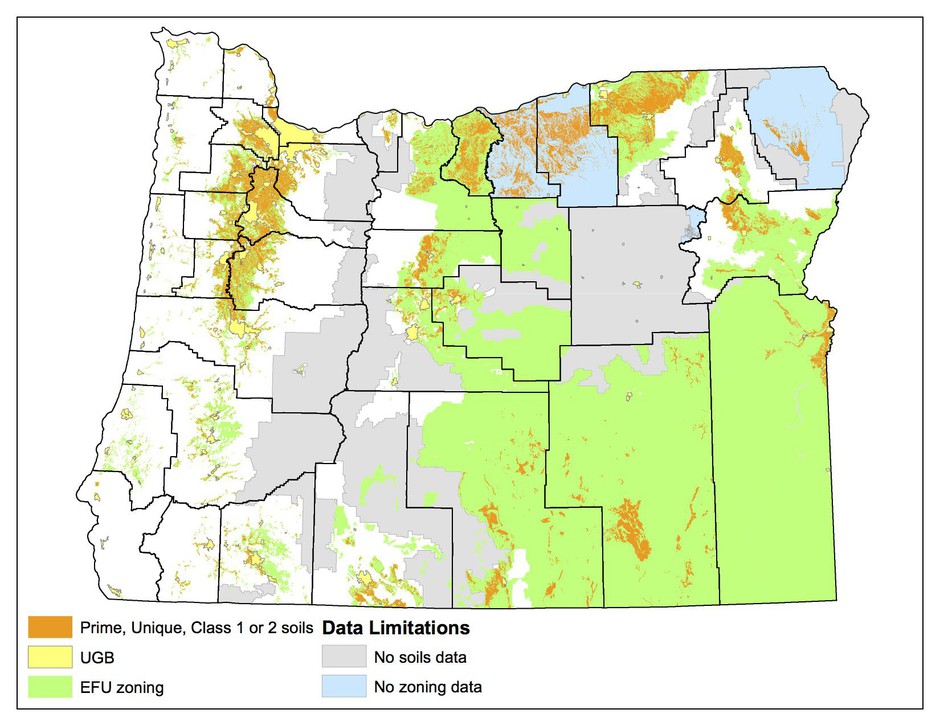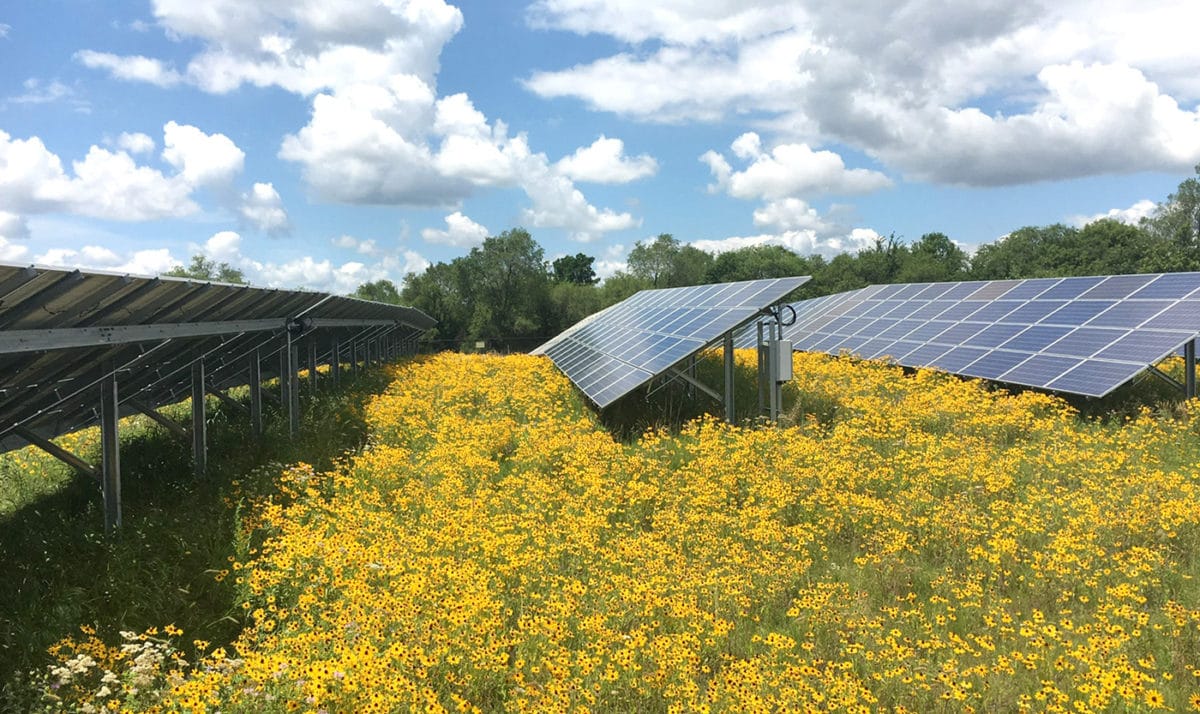If there were on thing that you would think Oregon should have enough of, it is land. The state has less than 40 residents per square mile, making it less dense than 38 other states, and nearly 2/3 of these are crammed into the 7,000 square miles of the Portland metro area, with the remaining 91,000 square miles of the state composed almost entirely of forests, deserts, mountains and farmland.
And it is this last category that is being contested, with the Oregon Land Conservation and Development Commission (LCDC) ruling yesterday to further restrict large-scale solar projects on the class 1 and 2 soils that are deemed prime farmland (brown areas).

While these soils make up only 6% of the total land area of the state, that includes most of the Willamette Valley, just South of the area where most of the state’s electricity demand comes from: Portland and its neighboring cities (the yellow area in the upper left corner).
Real or perceived threats?
In a draft of the policy proposal from January, LCDC stated that these rules are needed, despite the fact that solar installations on class 1 and 2 soils are already limited to 12 acres, due to the 80 solar projects that have been proposed for the Willamette Valley on this “high-value farmland”. These projects total 1.5 square miles.
Renewable Northwest has pointed out that this is only .07% of the nearly 2,300 square miles in the Willamette Valley, and that furthermore as these are only applications, many of these projects will never actually get built.
In its December filing, Renewable Northwest states that the concerns shown by the commission are “drastically out of proportion to any real or perceived threat to Oregon’s farmland”. Furthermore, it states that “the Department has failed to clearly identify how the current provisions do not adequately protect high-value farmland.”
In opposing these rules, Renewable Northwest was joined by several other advocacy organizations, including the Coalition for Community Solar Access, the Oregon Solar Energy Industries Association and a host of local environmental and clean energy advocacy organizations.
What about the farmers?
Renewable Northwest further argues that one key constituency has been left out of the process so far: farmers and landowners. And while there was one argument against the case in the record by landowner Vito Cortese of Beaverton, this supported the allegations by Renewable Northwest that the state’s moves could have impacts on farmers who rely on solar to diversify their incomes. Per the organization’s comments:
Landowners who support solar development and have found significant benefit to diversifying their agricultural investment in the state were not invited to participate in the RAC and have not been consulted on the draft rules.
The draft rules take an important voice of Oregon’s most knowledgeable land stewards out of the process and rely on perceived threats raised by a very narrow contingent of Oregon stakeholders to effectively ban the opportunity for landowners to consider development on their least productive lands. Oregon’s agricultural industry relies very heavily on non-farm income, and with all the other threats to agriculture we are currently seeing, including the effects of climate change, it is not appropriate to limit a farmer’s ability to utilize their land in a way that has not been demonstrated to have a negative impact on the overall agricultural economy in Oregon.
Oregon is far from the only state where this has played out, and if anything such conflicts are more intense in the more densely populated Northeast. But is it showing that even in the rural West, fights over land use are emerging as a challenge to large-scale solar.
This content is protected by copyright and may not be reused. If you want to cooperate with us and would like to reuse some of our content, please contact: editors@pv-magazine.com.









There are plenty of areas with Class 3 and 4 soils and physical characteristics conducive to solar development in the Willamette Valley. Unfortunately, the majority of the prime farmland is adjacent to Interstate 5 in the mid to north valley (south of Portland) and likely where these projects have the most interest. I do not know the proximity requirements of a solar field to sub stations, etc; however, if it was my money developing a solar project I would not want to purchase the most expensive land for the project. There are flat areas in Linn County south of Salem with farm land sold at half the price when compared to the area between Salem and Portland Metro.